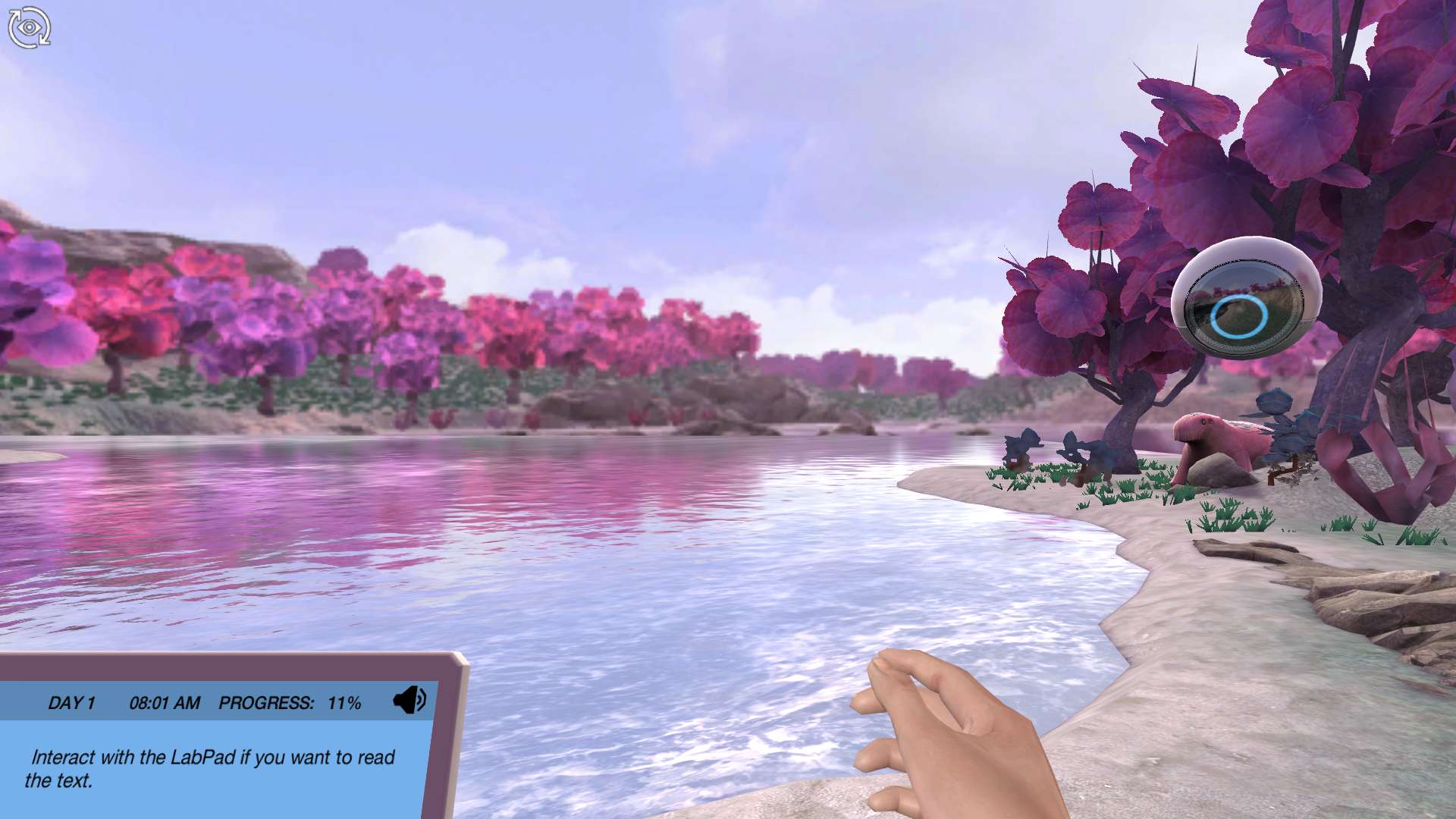Heading 1
Heading 2
Heading 3
Heading 4
Heading 5
Heading 6
Lorem ipsum dolor sit amet, consectetur adipiscing elit, sed do eiusmod tempor incididunt ut labore et dolore magna aliqua. Ut enim ad minim veniam, quis nostrud exercitation ullamco laboris nisi ut aliquip ex ea commodo consequat. Duis aute irure dolor in reprehenderit in voluptate velit esse cillum dolore eu fugiat nulla pariatur.
Block quote
Ordered list
- Item 1
- Item 2
- Item 3
Unordered list
- Item A
- Item B
- Item C
Bold text
Emphasis
Superscript
Subscript
About This Simulation
Help reduce the impact from humans on an aquatic ecosystem on an exoplanet by using your knowledge of trophic cascades in a food web.
Learning Objectives
- Understand food webs
- Explain the differences between different trophic cascades
- Calculate the amount of energy needed for maintenance
About This Simulation
Lab Techniques
- Trophic cascades such as top down and bottom up cascades
- Feed conversion efficiencies
- Aquatic respirometry
Related Standards
- ESS3.C-H1
- HS-LS2-4
- No direct alignment
- Biology C.2 Communities and ecosystems
Learn More About This Simulation
In this simulation, you will learn about food webs. You will be guided through the different trophic levels of a food web on the exoplanet Astakos IV, while learning about the interactions between different organisms.
Energy transfers in a food web
First, you will learn how energy is transferred in a food web, and how each trophic level interacts, during both top-down and bottom-up trophic cascades. You will also measure the respiration of an alien and calculate its energy needs.
Estimate energy transfer in a food web
You will be presented with an alien food web with grazers, omnivores and predators. By measuring respiration you will estimate the energy used by a central omnivore species. You will also be tasked with assessing the direction of the energy flow through the food web when a trophic cascade is caused by anthropogenic disturbances.
What happens when the main source of energy is removed from a food web?
Through a series of mini games you will help a group of settlers on Astakos IV assess their impact on the local ecosystem. Are you up for the challenge of figuring out how the settlers’ different constructions impact the local food web?
For Science Programs Providing a Learning Advantage
Boost STEM Pass Rates
Boost Learning with Fun
75% of students show high engagement and improved grades with Labster
Discover Simulations That Match Your Syllabus
Easily bolster your learning objectives with relevant, interactive content
Place Students in the Shoes of Real Scientists
Practice a lab procedure or visualize theory through narrative-driven scenarios


FAQs
Find answers to frequently asked questions.
Heading 1
Heading 2
Heading 3
Heading 4
Heading 5
Heading 6
Lorem ipsum dolor sit amet, consectetur adipiscing elit, sed do eiusmod tempor incididunt ut labore et dolore magna aliqua. Ut enim ad minim veniam, quis nostrud exercitation ullamco laboris nisi ut aliquip ex ea commodo consequat. Duis aute irure dolor in reprehenderit in voluptate velit esse cillum dolore eu fugiat nulla pariatur.
Block quote
Ordered list
- Item 1
- Item 2
- Item 3
Unordered list
- Item A
- Item B
- Item C
Bold text
Emphasis
Superscript
Subscript
A Labster virtual lab is an interactive, multimedia assignment that students access right from their computers. Many Labster virtual labs prepare students for success in college by introducing foundational knowledge using multimedia visualizations that make it easier to understand complex concepts. Other Labster virtual labs prepare learners for careers in STEM labs by giving them realistic practice on lab techniques and procedures.
Labster’s virtual lab simulations are created by scientists and designed to maximize engagement and interactivity. Unlike watching a video or reading a textbook, Labster virtual labs are interactive. To make progress, students must think critically and solve a real-world problem. We believe that learning by doing makes STEM stick.
Yes, Labster is compatible with all major LMS (Learning Management Systems) including Blackboard, Canvas, D2L, Moodle, and many others. Students can access Labster like any other assignment. If your institution does not choose an LMS integration, students will log into Labster’s Course Manager once they have an account created. Your institution will decide which is the best access method.
Labster is available for purchase by instructors, faculty, and administrators at education institutions. Purchasing our starter package, Labster Explorer, can be done using a credit card if you are located in the USA, Canada, or Mexico. If you are outside of North America or are choosing a higher plan, please speak with a Labster sales representative. Compare plans.
Labster supports a wide range of STEM courses at the high school, college, and university level across fields in biology, chemistry, physics, and health sciences. You can identify topics for your courses by searching our Content Catalog.







.png?fm=jpg&w=700&h=400)







